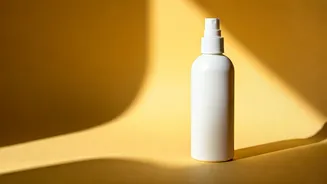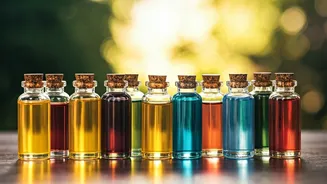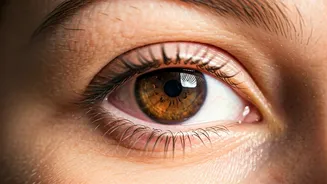The Pigmentation Puzzle
The sun's rays can have various impacts on our skin. The primary cause behind pigmentation is the sun, particularly ultraviolet (UV) radiation, which stimulates
melanocytes. These are the cells responsible for producing melanin. Melanin is a natural pigment that gives skin its colour and provides some protection against the sun. Exposure to UV radiation prompts melanocytes to increase melanin production. This increased melanin helps absorb UV rays, preventing them from penetrating deeper into the skin and causing damage. However, excessive sun exposure can lead to uneven melanin production, resulting in hyperpigmentation (dark spots or patches) or hypopigmentation (light spots). The body's response to sun exposure, and the impact of melanin, is therefore vital to understanding how sunscreen functions.
SPF's Protective Actions
Sunscreen, with its Sun Protection Factor (SPF), acts as a shield against UV radiation. SPF measures how effectively a sunscreen protects against UVB rays, which are the primary cause of sunburn and contribute to skin cancer. The number associated with SPF, such as SPF 30 or SPF 50, indicates how much longer it takes for the skin to redden when exposed to the sun, compared to unprotected skin. For instance, SPF 30 means it would take 30 times longer to burn. Sunscreens work through two main mechanisms: absorbing UV rays or reflecting them. Chemical sunscreens absorb UV radiation and convert it into heat, which is then released from the skin. Physical sunscreens, like those containing zinc oxide or titanium dioxide, create a physical barrier that reflects or scatters UV rays before they can penetrate the skin. Both types of sunscreen play a role in preventing the skin damage that can lead to pigmentation changes.
Skin Tone and Sunscreen
The effectiveness of sunscreen is not solely determined by skin tone; everyone needs sun protection. People with darker skin tones have more melanin, which provides some natural protection against UV radiation. However, this protection is not enough. Everyone, regardless of skin tone, is susceptible to sun damage. While darker skin might be less prone to sunburn, it is still vulnerable to the long-term effects of UV exposure, such as premature aging, and skin cancer. Sunscreen helps reduce the risk of hyperpigmentation, and it protects against skin cancer, and the need for it crosses the boundaries of skin tones. It's important to note that while sunscreens provide significant protection, no sunscreen blocks 100% of UV rays. Therefore, it's necessary to follow additional sun safety practices, such as seeking shade and wearing protective clothing, for comprehensive protection.
Consistent Application Matters
For sunscreen to work effectively, consistent application is key. Most people do not apply enough sunscreen. It’s generally recommended to apply about one ounce (a shot glass full) of sunscreen to the entire body. Sunscreen should be applied approximately 15-30 minutes before sun exposure. This allows the sunscreen to form a protective layer on the skin. Reapplication is critical, especially after swimming or sweating. It's generally recommended to reapply sunscreen every two hours, or more frequently if engaged in activities that involve water or excessive sweating. Using a broad-spectrum sunscreen, which protects against both UVA and UVB rays, is also essential. UVA rays can cause premature aging and contribute to skin cancer. Regularly using and reapplying sunscreen are your best defenses against sun damage and pigmentation changes.











